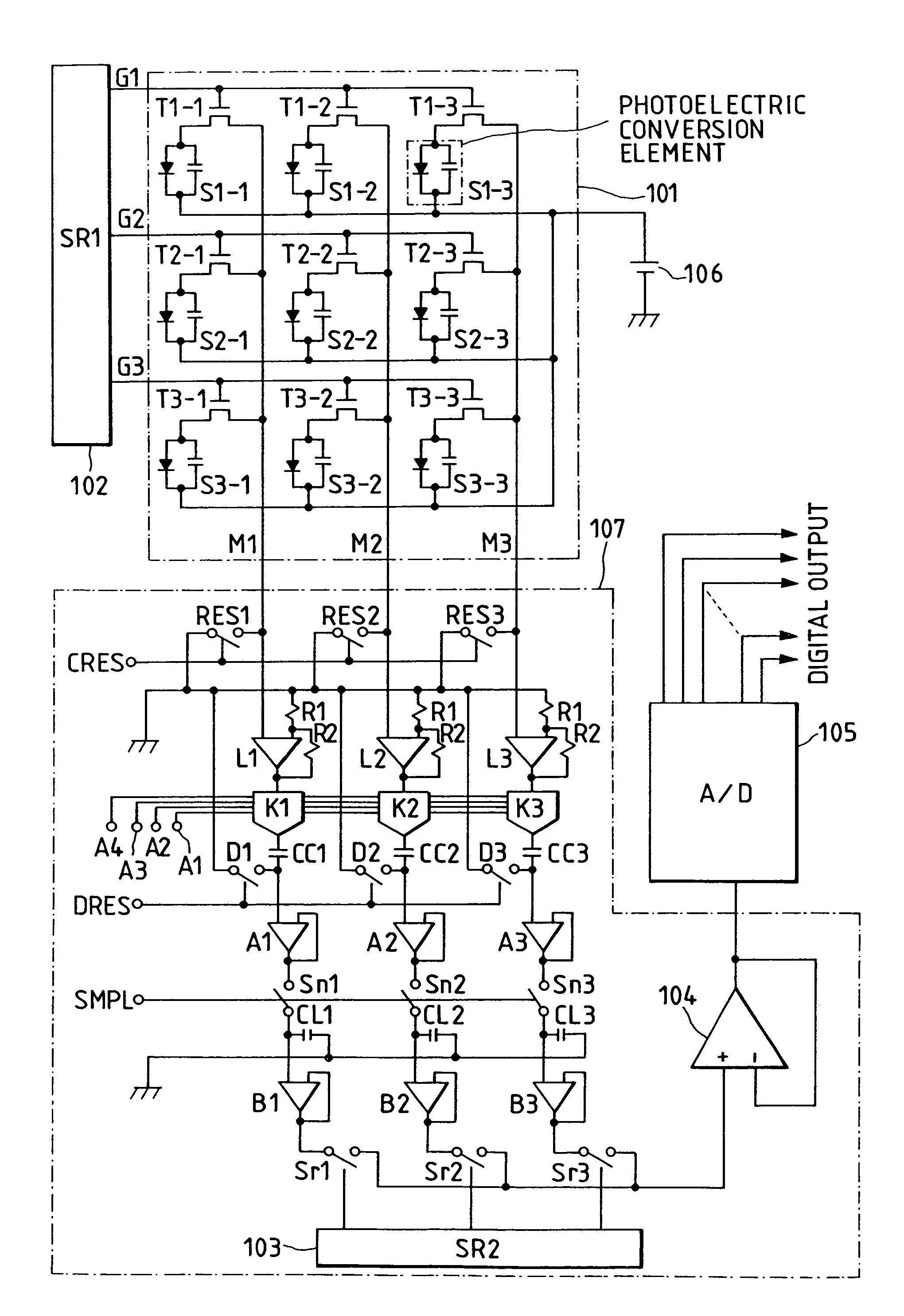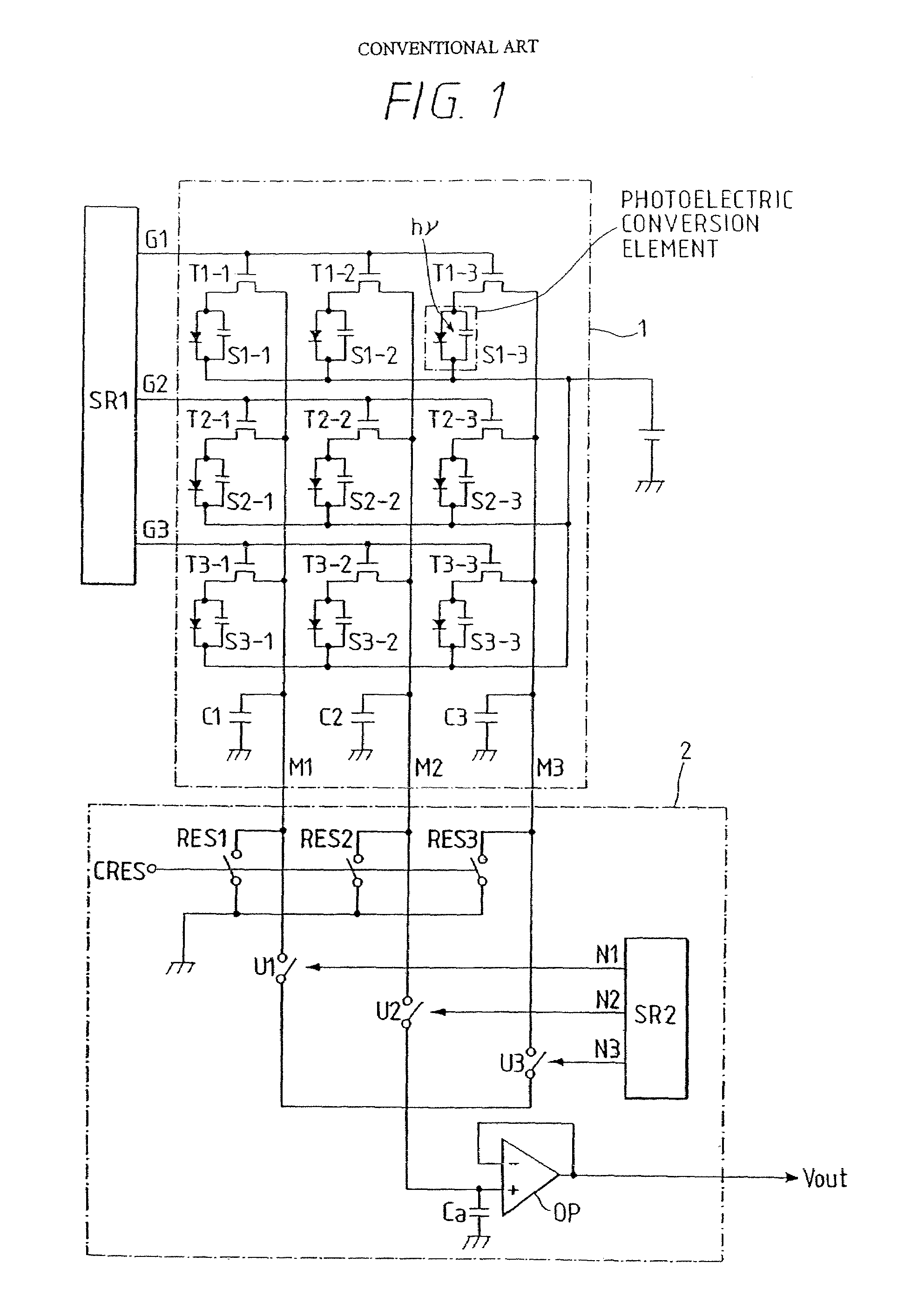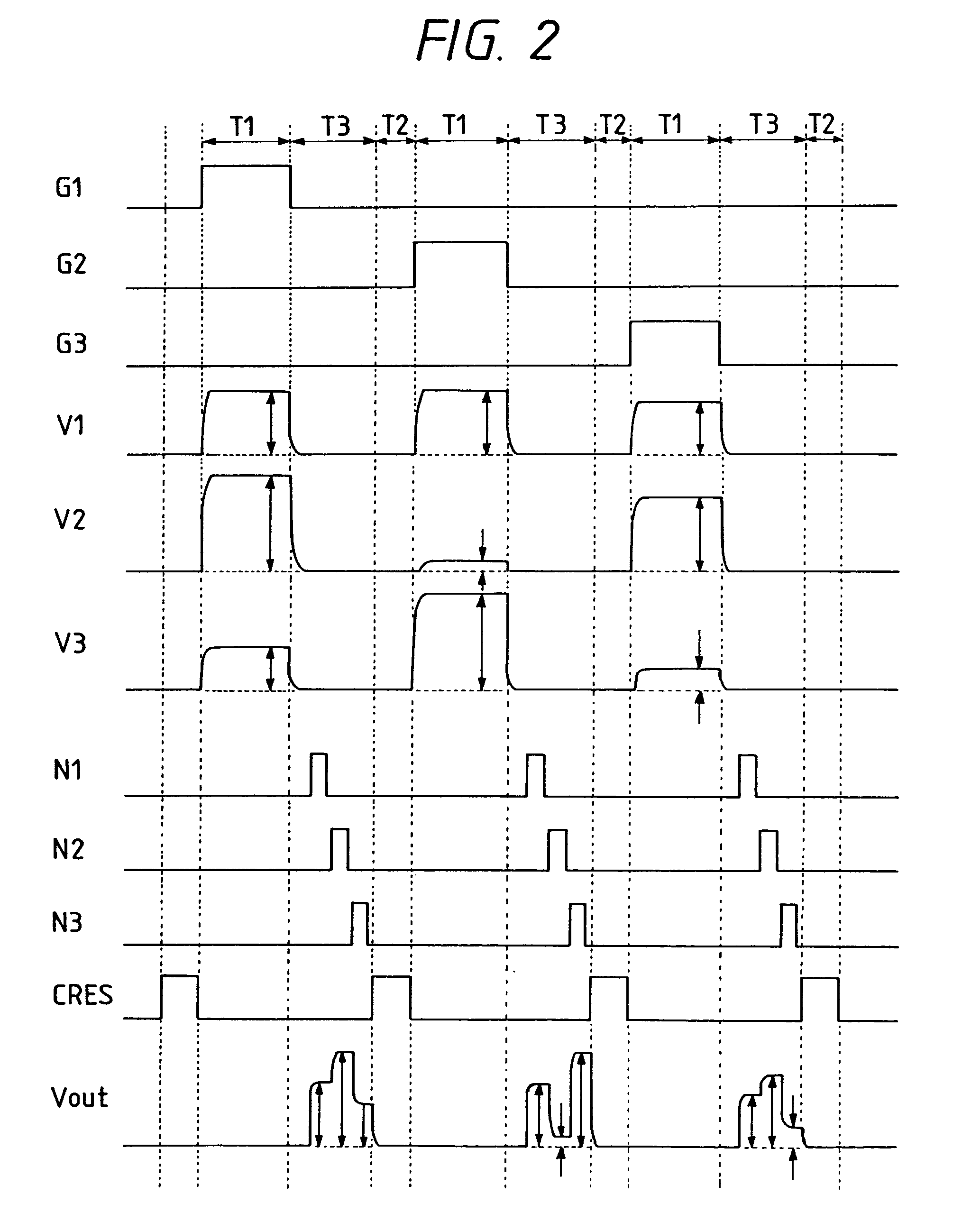Photoelectric conversion apparatus and photoelectric conversion system having the apparatus
a conversion system and photoelectric technology, applied in the field of photoelectric conversion apparatus and photoelectric conversion system having the apparatus, can solve the problems of imposing a large load on the patient, affecting the efficiency of diagnosis and treatment, and requiring a lot of time for the x-ray image pickup apparatus of the conventional film method, so as to reduce the read scanning time, reduce the generation of thermal noise, and improve the effect of image information
- Summary
- Abstract
- Description
- Claims
- Application Information
AI Technical Summary
Benefits of technology
Problems solved by technology
Method used
Image
Examples
embodiment 1
[0095]FIG. 3 is a circuit diagram of a photoelectric conversion apparatus to show the first embodiment of the present invention. For simplifying the description, the figure illustrates the structure of 3×3, nine pixels in total. Further, the same members as those in FIG. 1 will be denoted by the same symbols. S1-1 to S3-3 are photoelectric conversion elements for receiving the visible light and converting it to electric signals, and T1-1 to T3-3 are switch elements for transferring signal charges obtained by photoelectric conversion in the photoelectric conversion elements S1-1 to S3-3 to the matrix signal wires M1 to M3. G1 to G3 represent wires for driving the gates of switches, connected to the shift register (SR1) and connected to the switch elements T1-1 to T3-3. The capacitance comprised of three interelectrode capacitances (Cgs) of switch elements is applied to the matrix signal wire M1 upon transfer, as described above, and it is not illustrated as a capacitor element in FIG...
embodiment 2
[0111]FIG. 6 is a circuit diagram of a photoelectric conversion apparatus to show the second embodiment of the present invention, which is an example where the photoelectric conversion circuit section is constructed of 3×3=9 pixels. The same constituent members as those in FIG. 3 showing Embodiment 1 are denoted by the same reference symbols and description thereof is omitted herein. FIG. 6 is different from FIG. 3 in that the buffer amplifiers L1 to L3 connected to the respective matrix signal wires in the reading circuit section are replaced by non-inverting amplifiers with an amplification factor G determined by resistors R1, R2. Further, though not shown in FIG. 6, the OP amps of the buffer amplifiers L1 to L3 are excellent in very low noise performance as compared with the other amplifiers. The amplification factor is 1+(R2 / R1).
[0112]In general, the OP amps generate random voltage-nature noise, it is dominated by noise occurring in transistors incorporated, especially in first-...
embodiment 3
[0122]FIG. 8 is a circuit diagram of a photoelectric conversion apparatus to show the third embodiment of the present invention, which is an example in which the photoelectric conversion circuit section is constructed of 3×3=9 pixels. The same constituent members as those in FIG. 6 shown in the second embodiment are denoted by the same reference symbols and description thereof is omitted. FIG. 8 is different from FIG. 6 in that in the reading circuit section capacitor elements CC1 to CC3 for letting only AC components pass are connected to midway of output wires from the output terminals of OP amps L1 to L3 and in that reset switches D1 to D3 for DC restoration of the capacitor elements are provided. Further, a buffer amplifier A1 to A3 for impedance transformation is connected to each capacitor element CC1 to CC3.
[0123]Also, FIG. 9 is a timing chart to show the operation in FIG. 8, which especially illustrates the operation related to the capacitor elements CC1 to CC3 and reset swi...
PUM
 Login to View More
Login to View More Abstract
Description
Claims
Application Information
 Login to View More
Login to View More - R&D
- Intellectual Property
- Life Sciences
- Materials
- Tech Scout
- Unparalleled Data Quality
- Higher Quality Content
- 60% Fewer Hallucinations
Browse by: Latest US Patents, China's latest patents, Technical Efficacy Thesaurus, Application Domain, Technology Topic, Popular Technical Reports.
© 2025 PatSnap. All rights reserved.Legal|Privacy policy|Modern Slavery Act Transparency Statement|Sitemap|About US| Contact US: help@patsnap.com



